| ~ Hall of Heroes ~ The Berlin Airlift
Part 1: The Beginning
All info and photos from this website. |
     |
| For the next four weeks, on Mondays, the Hall of the Heroes threads will be about the Berlin Airlift and it's heroes. I hope the story inspires you like it does me! Thank you to ConorMacNessa for the thread topic tip! |
The Berlin Airlift
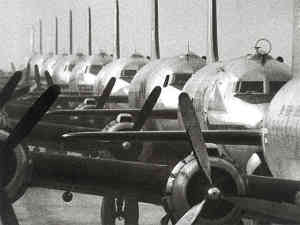
PRELUDE TO CONFLICT
At the end of WWII, a defeated Germany was divided amongst the victors, the United States, the Soviet Union, Great Britain, and France. The Soviet Union took control of the Eastern half of Germany, the Western half was divided amongst the US, Great Britain, and France. Like the rest of the country, the capital city of Berlin, sitting dead in the middle of the Soviet-controlled Eastern half, was also divided into four parts, one half being Soviet controlled, and the rest divided amongst the others. A four-power provisional government, called the Allied Control Council, was installed in Berlin. This union of governments was to control and rebuild the city of Berlin.
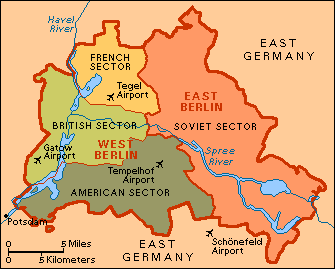
|
By 1948, it became apparent that the Western Powers (Great Britain, France, and US) plan to rebuild Germany differed from the Soviet Union's plan. Currency, German Unification, Soviet War reparations, and mere ideology were among the many differences the two sides had. There would be no compromise. As a result, Stalin wanted them out of Berlin. In early 1948, tensions between the once former Allies climaxed. On April 9, 1948, Stalin ordered all American Military personnel maintaining communications equipment out of the Eastern Zone (Soviet controlled Berlin). Trains were halted on June 1and June10. On June 21, the Soviets halted a US Military Supply Train and refused it passage to Berlin. On the 22nd, they placed armed guards aboard, attached a Soviet engine and hauled it back to Western Germany. In a final move to spurn the Americans, British, and French out, on June 24, 1948, all land and water access to West Berlin was cut off by the Soviets. There were to be no more supplies from the West. What was going to happen? Where were the necessary supplies going to come from for the Occupation Forces? For that matter, where were the supplies for the 2,008,943 Berliners going to come from? It was a grave situation.
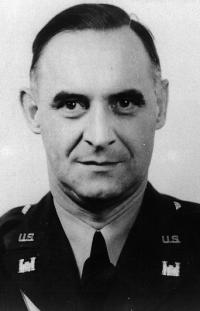 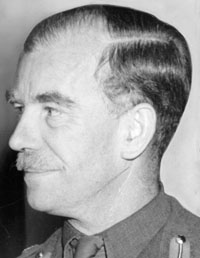 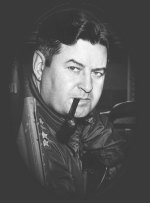 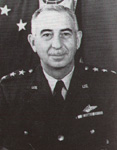
General Lucius Clay Sir Brian Robertson General Curt LeMay Brig. General Joseph Smith
The Allies were certainly not going to stand for this. Diplomacy failed, Ground invasions were planned, and World War 3 was on the brink of existence. US Military Commander Lucius Clay had developed a plan by which an armed convoy through Soviet Controlled Germany would break the blockade. This action would certainly create a war.
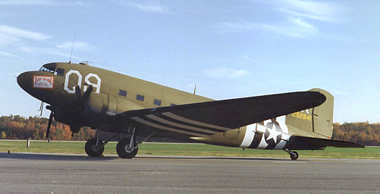 A Douglas C-47, the military version of the DC-3. It is capable of hauling 3.5 tons of cargo. |
MEAGER BEGINNINGS
However, British Commander Sir Brian Robertson offered an alternative: supply the city by air. A daunting task. Supplying the Occupation forces of 2,2679 was easy, but the entire population? The only aircraft the Americans had available for the task were 5 year old Douglas C-47 Skytrains, which would only hold 3.5 tons each. After some consultation, the decision was made: it was worth a try. Earlier in April, US Forces airlifted in supplies to replace the ones being delayed by the Soviets. This was what became known as the "Little Lift". West Berlin had two airports, Tempelhof, which was Berlin's main airport and located in the American Sector, and Gatow, in the British Sector. Supplies could be airlifted in by C-47 and there was nothing the Soviet Union could do about because, in 1945, someone had foresight. On November 30, 1945, it was agreed, in writing, that there would be three 20-mile wide air corridors providing access to the city. These were unarguable.
When the blockade began, the Soviets rejoiced, because they believed the Western powers had only one option, to leave Berlin. But they underestimated the West airlift supplies. Gen. Clay called upon General Curtis E. LeMay, commander of USAFE and asked him if he could haul supplies to Berlin. LeMay responded, "We can haul anything". Two days later Gen. LeMay called upon Brig. Gen. Joseph Smith, Commander of the Wiesbaden Military Post, and appointed him Task Force Commander of an airlift operation estimated to last a few weeks. The only US aircraft initially available were 102 C-47's and 2 C-54 Skymasters. On June 26, the first C-47's landed at Tempelhof Airfield, foreshadowing the great operation that was to come. Smith dubbed the mission "Operation Vittles", because he said "We're haulin' grub." The British called their part "Operation Plane Fare".
It was determined that the city's daily food ration would be 646 tons of flour and wheat; 125 tons of cereal; 64 tons of fat; 109 tons of meat and fish; 180 tons of dehydrated potatoes; 180 tons of sugar; 11 tons of coffee; 19 tons of powdered milk; 5 tons of whole milk for children; 3 tons of fresh yeast for baking; 144 tons of dehydrated vegetables; 38 tons of salt; and 10 tons of cheese. In total, 1,534 tons were needed daily to keep the over 2 million people alive. That's not including other necessities, like coal and fuel. In fact, the largest quantity of anything required was coal. It wasn't needed to heat homes as much as it was necessary for industry. In addition, there was limited electricity, because the city's power plant was located in the Soviet sector, so that was cut off, too. It was determined that in total supplies, 3,475 tons would be needed daily. A C-47 can haul 3.5 tons. In order to supply the people of Berliners, C-47's would have to make 1000 flights each day. Impossible.
Initially, Gen. Clay determined that, with the limited number of airplanes available to him, he could haul about 300 tons of supplies a day, the British effort, was estimated to be capable of 750 tons a day. This leaves a 2,425-ton deficit daily. Realizing that this kind of tonnage could not be achieved using C-47's, Gen. Clay and Gen. LeMay made requests for more C-54's, for they could carry over three times more cargo than C-47's. On June 27, an additional 52 Skymasters were ordered to Berlin.
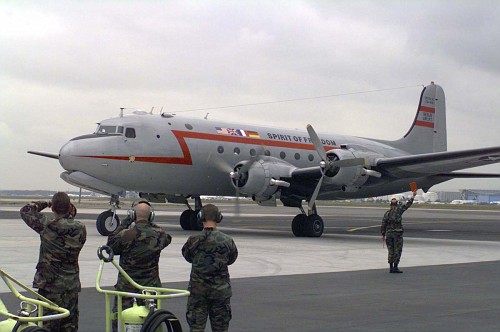 A Douglas C-54 Skymaster. It was capable of hauling 10 tons, almost
3 times as much cargo as its predecessor, the C-47. This particular C-54 called "Spirit of Freedom" TM, is currently operated
by the Foundation as a flying museum about the Airlift. |
On June 28, President Truman made a statement that abandoning Berlin was out of the question. He then ordered US B-29 Superfortresses to be stationed at British airfields to show the Soviets that the Western powers were not taking this lightly. We would not abandon these people!
By July 1, C-54's were slowly taking over airlift flights, and they were operating 24 hours a day. Rhein-Main Air Base in Frankfort was made exclusive C-54 base, and Wiesbaden was a mix of C-54's and C-47's. To accommodate these two different aircraft, General smith established a block system, giving the bigger, faster C-54's priority. They were also given radio codes to identify each type and the direction it was going. C-47's going East to Berlin were called "Easy", returning C-47's traveling West, were called "Willie". C-54's had the names 'Big Easy' and "Big Willie". Aircraft were also given a spacing of three minutes apart.
The size of the operation had to be increased in order to sufficiently supply this city and keep these people going. It needed to be commanded by someone who had expertise in air transport. That man came in the form of Maj. General William H. Tunner. He was revered as "The transportation expert to end all transportation experts" by LeMay. Tunner had previously established the Ferrying Command in WWII, and successfully organized and commanded the "Hump" operation into China near the end of the war. His reputation was not falsely earned. Tunner hated to see airplanes parked on the ramp not being utilized. This was a waste to him. He longed for efficiency and was about to set the standard for all that followed.
....Continued next week.....
|
| Please remember the Canteen is here to honor, support and entertain our troops and their families. This is a politics-free zone! Thanks for helping us in our mission! |
|

